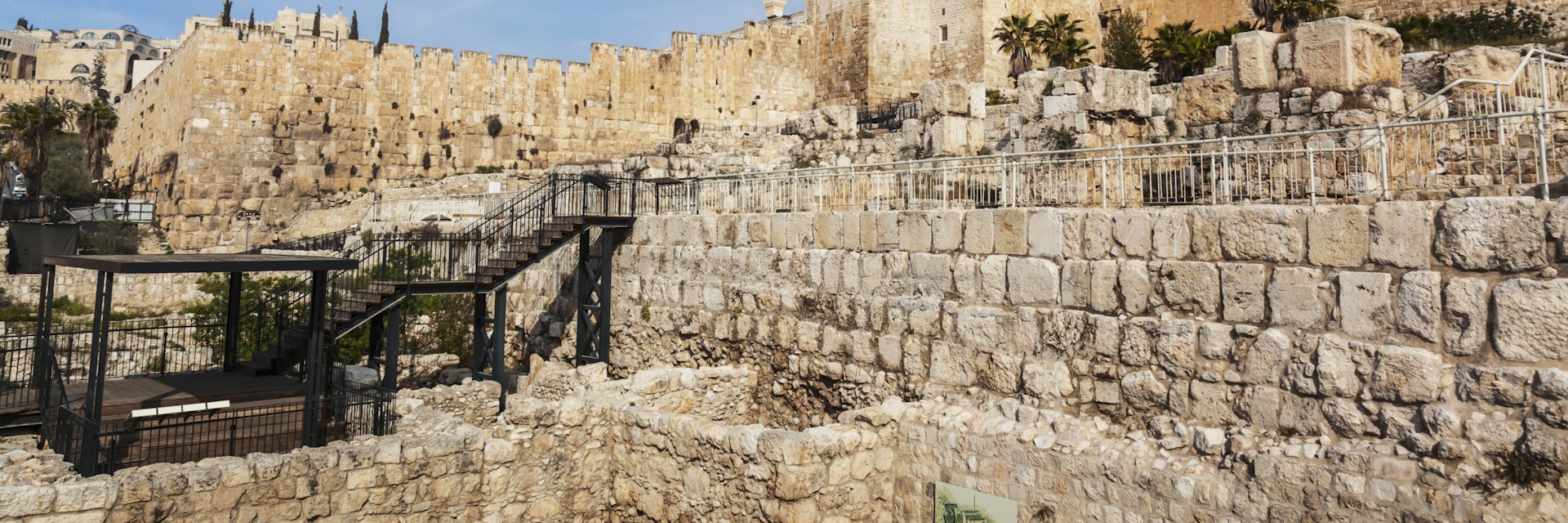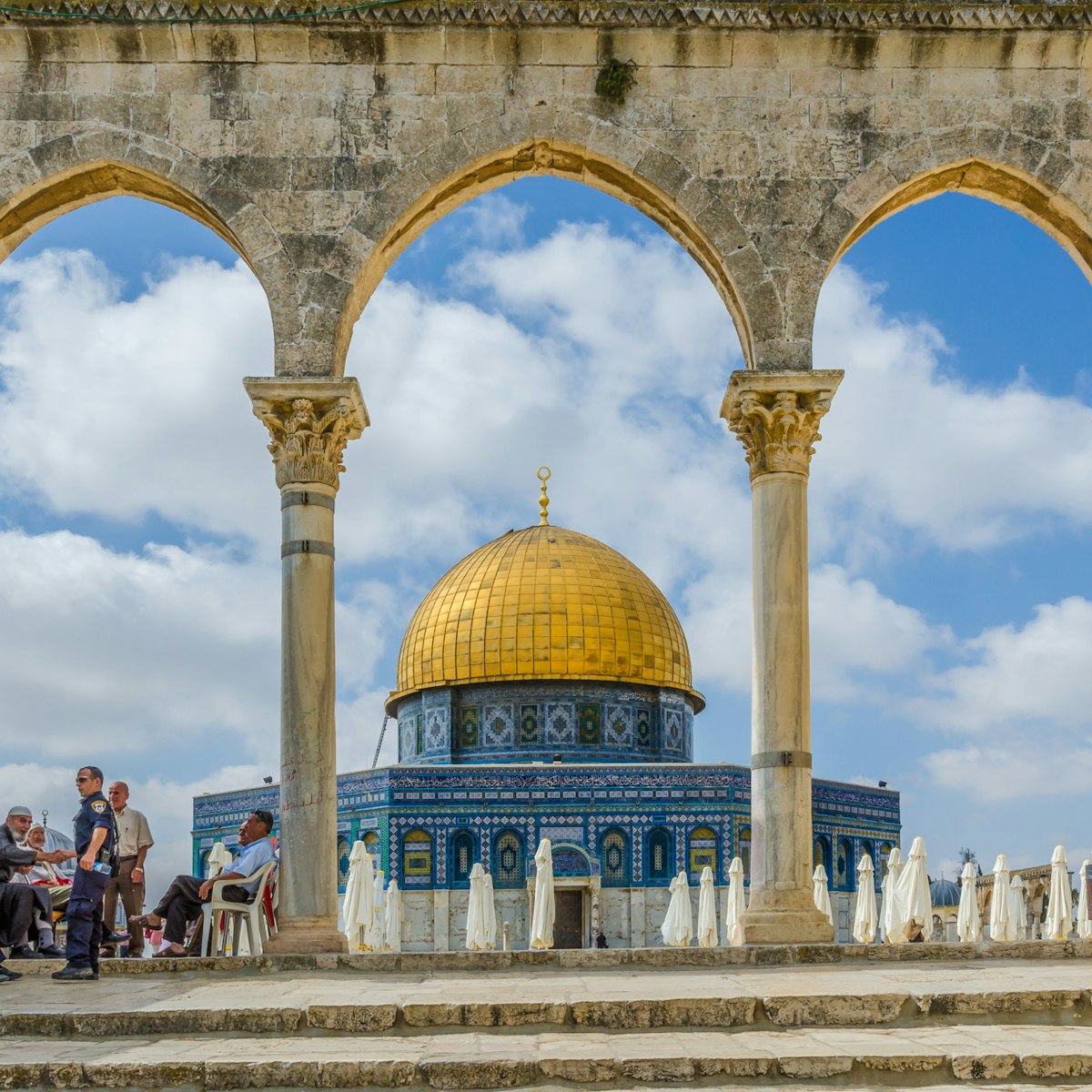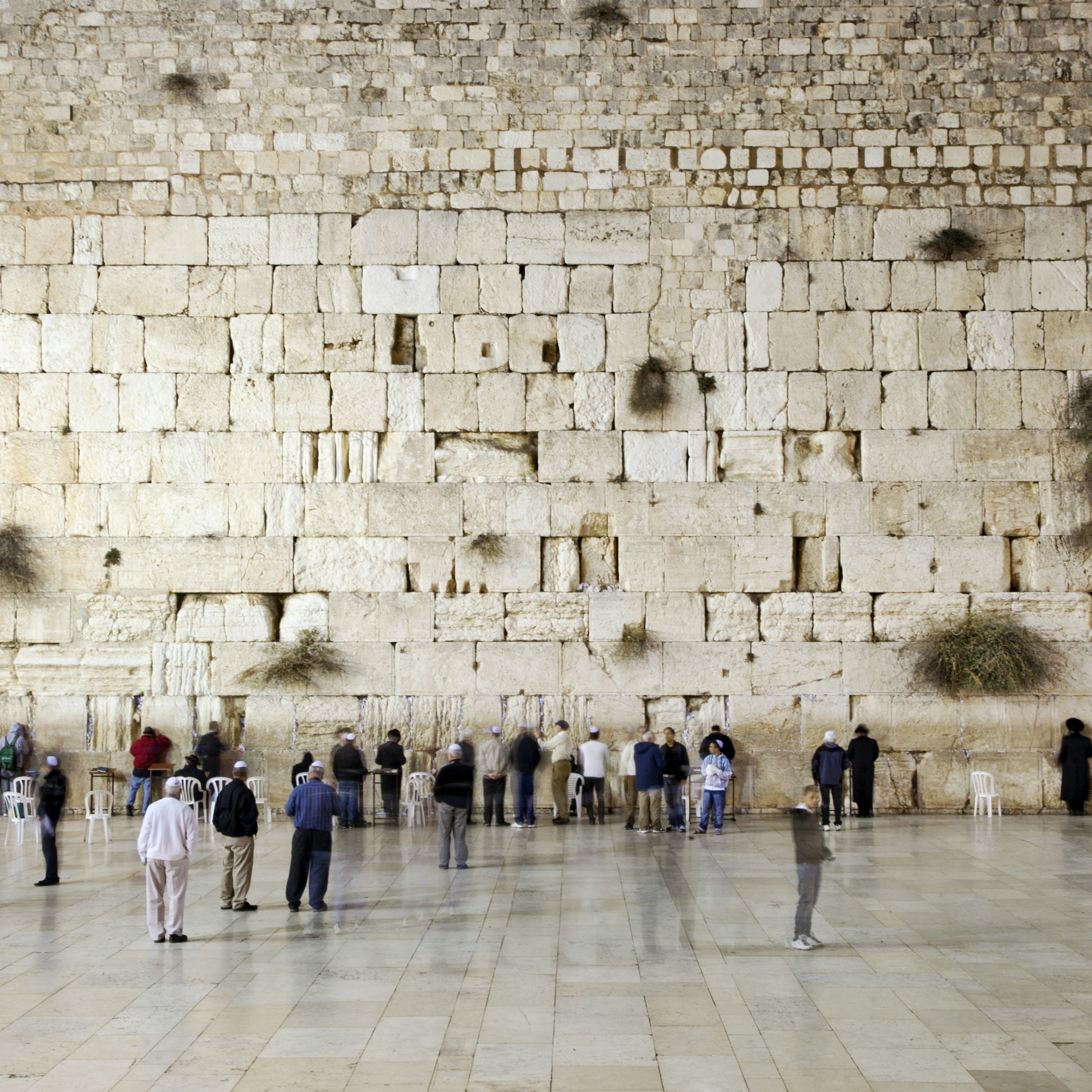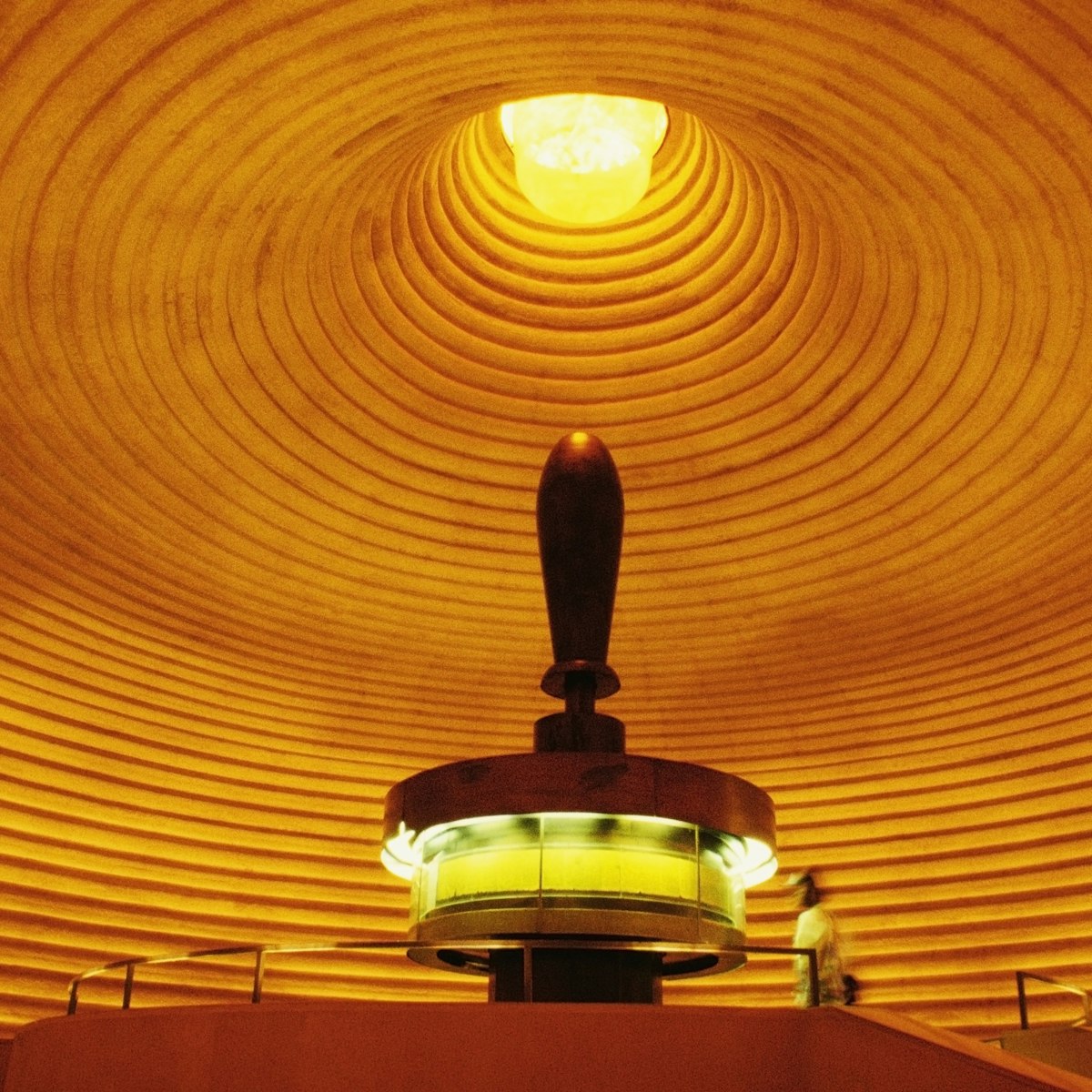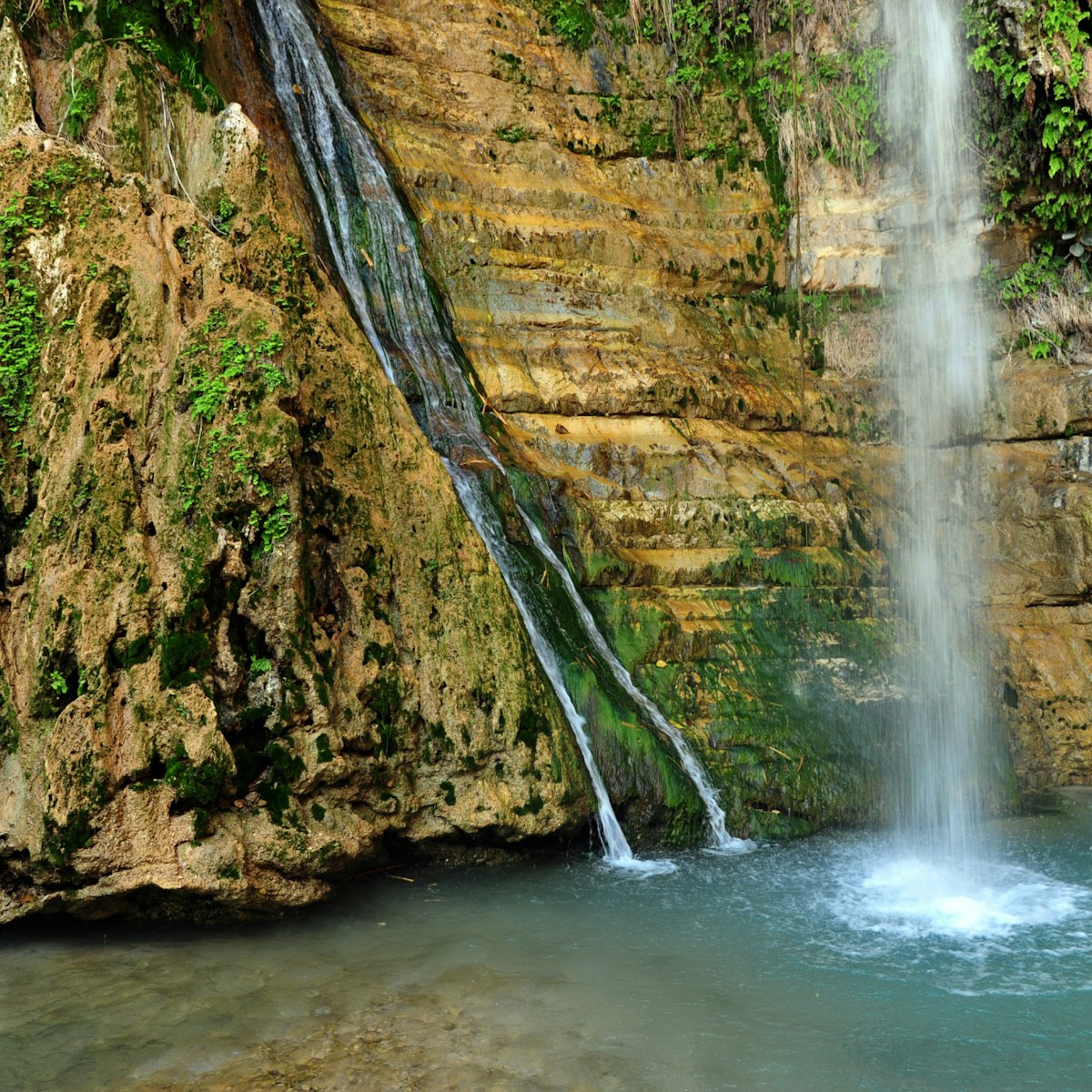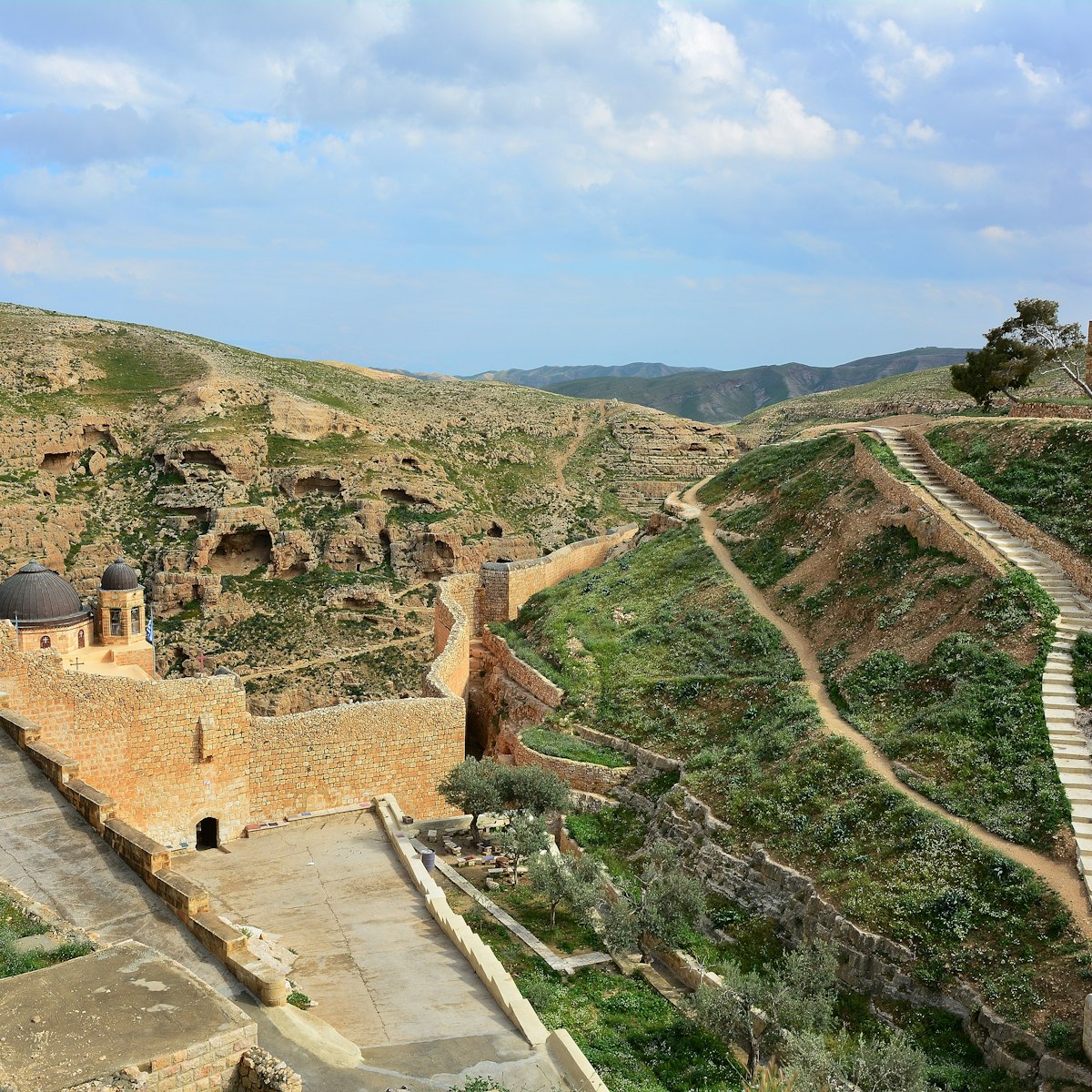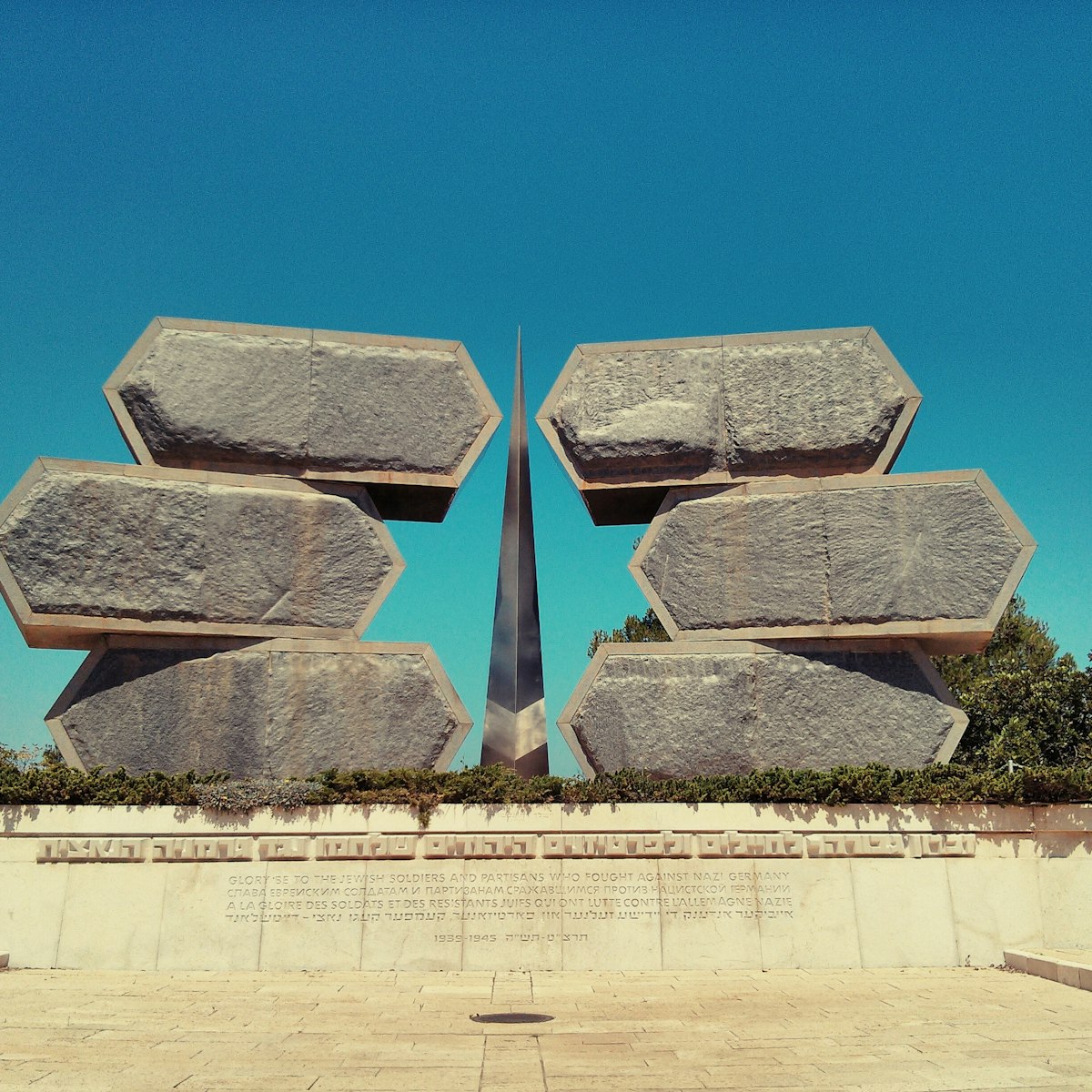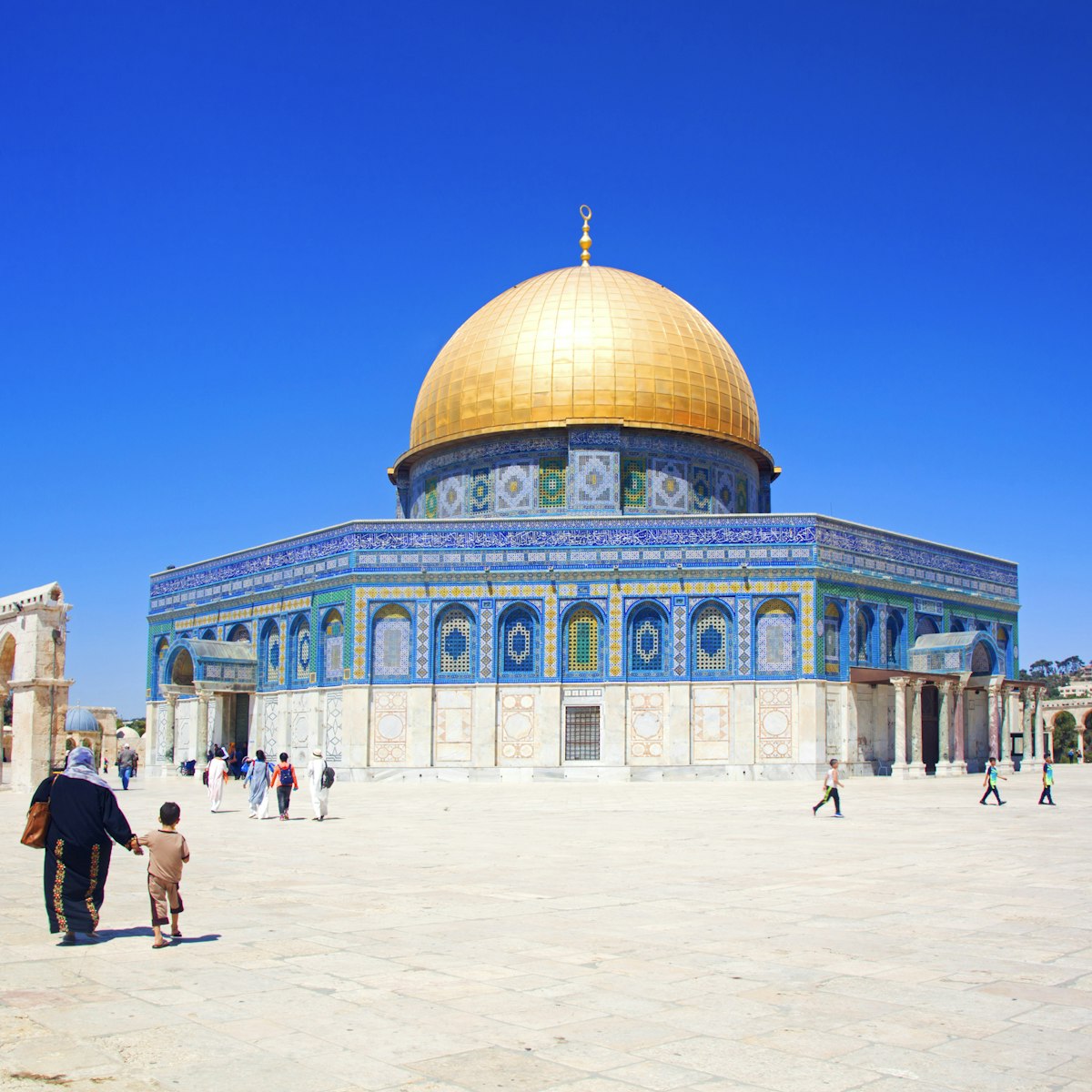As teeming with controversy as it is with ancient history, the City of David is one of Jerusalem's most active archaeological sites. The oldest part of Jerusalem, it was a settlement during the Canaanite period; David is said to have captured the city and to have brought the Ark of the Covenant here 3000 years ago. Excavations began in the 1850s and are ongoing, as are arguments over the development and expansion of the site which many consider to be on Palestinian lands.
From Dung Gate, head east (downhill) and take the road to the right; you'll find the entrance on the left. At the visitors centre, you can watch a 15-minute 3D movie about the city. There's a shop where you can buy snacks, drinks and water (in summer, you'll need it) and a pleasant patio cafe serving sandwiches, pastries and good coffee.
If you intend to walk through Hezekiah’s Tunnel – and unless you're claustrophobic we suggest you do – you can change into a swimming costume in the bathrooms and leave your gear in a locker (10NIS); alternatively, wear shorts. You will also need suitable footwear (strapped on sandals or waterproof shoes). Key-chain lights (5NIS) can be purchased from the ticket office, but it's better to bring a torch (flashlight).
Note that the entrance fee covers admission to the underground areas of the site (Warren's Shaft, Hezekiah’s Tunnel, the Pool of Siloam, Temple Road Ascent); admission should be free if you only explore above-ground areas. At this active dig site with ongoing works, it can be difficult to know what you're looking at – it's definitely useful to join a guided tour.
Once you reach the bottom of the hill, you can walk the 570m back up through the Temple Road Ascent or via the road that passes through the Palestinian village of Silwan. Alternatively, you can take a shuttle (5NIS).
Dramatic nighttime shows (adult/child 65/54NIS; Sunday, Tuesday, Wednesday and Thursday) in the amphitheatre feature massive lights highlighting the ruins of the Royal Quarter.
Allow at least three hours for a visit.
Royal Quarter (Area G)
The Royal Quarter was first constructed in the 10th century BCE, most likely as a fortification wall for a palace on the ridge. During the First Temple period an aristocrat’s home (Achiel’s House) was built against the wall, but it was destroyed along with the Temple in 586 BCE. Judean and Babylonian arrowheads were found in one of the chambers, called the Burnt Room because of its coating of ash, vivid reminders of the bloody battle waged here. Archaeologists have also located 51 royal seals (in ancient Hebrew script), including one thought to be that of the prophet Jeremiah's scribe, Gemaryahu Ben Shafan (Jeremiah 36:10). The seals were all located in one chamber, indicating that the room once served as an office.
Warren’s Shaft
The long, sloping Warren’s Shaft was named after Sir Charles Warren, the British engineer who rediscovered it in 1867. The tunnel, which runs underneath the City of David to the Gihon Spring, allowed the Canaanites to obtain water without exposing themselves to danger in times of siege. It’s just inside the city’s defence wall and is possibly the tunnel described in 2 Samuel 5 as the means by which David’s soldiers entered and captured the city. Modern archaeologists, however, tend to doubt this theory, suggesting the invaders used a different tunnel. From Warren’s Shaft, you can proceed down to Hezekiah’s Tunnel at the bottom of the hill. The shaft closes one hour before the City of David's official closing time.
Hezekiah’s Tunnel
This 500m-long underground watery passage ends at the Pool of Siloam, where it is said that a blind man was healed after Jesus told him to wash in it. The purpose of the tunnel was to channel water flowing from the Gihon Spring, a temperamental source that acts like a siphon, pouring out a large quantity of water for some 30 minutes before drying up for several hours.
Gihon means ‘gushing’, and the spring is the main reason the Canaanites settled in the valley rather than taking to the adjacent high ground. There is believed to be enough water to support a population of about 2500 people. The tunnel was constructed around 700 BCE by King Hezekiah to bring the water of the Gihon into the city and store it in the Pool of Siloam, thus preventing invaders, in particular the Assyrians, from locating the city’s water supply and cutting it off (an account of this is in 2 Chronicles 32:30).
Although the tunnel is narrow and low in parts, you can wade through it; the water is normally between 50cm and 1m deep. The tunnel is as little as 60cm wide at some points.
About 20m into the tunnel, the cavern turns sharply to the left, where a chest-high wall blocks another channel that leads to Warren’s Shaft. Towards the tunnel’s end the roof rises. This is because the tunnellers worked from either end and one team slightly misjudged the other’s level. They had to lower the floor so that the water would flow. A Hebrew inscription was found in the tunnel (a copy can be seen in the Israel Museum): carved by Hezekiah’s engineers, it tells of the tunnel’s construction.
The walk through Hezekiah’s Tunnel takes about 20 minutes (or 40 minutes if it's busy), but allow yourself plenty of time for the descent to the start and return ascent. If you don’t want to get wet, there's a second tunnel without water, which takes about 15 minutes to walk through. To find the entrance to the dry tunnel, go left just before the opening to Hezekiah’s Tunnel. Older children can walk through Hezekiah’s Tunnel, but ask about the water levels before going inside. You must begin the tunnel walk one hour before the City of David's official closing time.
Pool of Siloam
As you exit from Hezekiah’s Tunnel, there is a small pool with round stones. Mindful of Jesus's healing of the blind man (John 9), the Byzantines built this pool in the 5th century.
Shiloach Pool
From the Byzantine Pool of Siloam, head up the stairs and out to an open area with crumbling steps that lead down to a small pond which is the Shiloach Pool. The pool, built during the Second Temple period and used for purification rituals, was rediscovered by a bit of 'good luck' after an underground sewage pipe burst during excavations in 2004. Archaeologists and historians have theorised that this is the pool where Jesus is said to have healed a blind man.
Eastern Stepped Street
From the Shiloach Pool, head up the flight of wooden steps to the Eastern Stepped Street, an ancient flight of stone steps. The stair pattern – pairs of short steps with a long gap between them – is thought to have been designed for animals, so sacrifices could be led upwards with ease. A drainage ditch is located under the steps and it was here that archaeologists found Roman-era coins and pottery, leading historians to believe that the ditch served as a hideout for Jews while the city was being sacked in 70 CE.
Drainage Tunnel to Western Wall
This recently discovered 650m-long tunnel is a drainage ditch that channelled water out of the Temple Mount/Al Haram Ash Sharif area. The bottom of the tunnel is near the Shiloach Pool; from here it’s possible to walk uphill back to the Old City, exiting either into the Givati parking lot site or into the Davidson Archaeological Park and Robinson's Arch area (you pay extra to exit here). The tunnel, directly below a Herod-era road, is generally comfortably wide; however, there a few narrow parts.
Givati Parking Lot
The largest ongoing dig in the City of David and all of Jerusalem is this massive open pit, formerly a car park, just uphill and across the street from the visitors centre. Ten years of excavations and well, you can see they've done more than scratch the surface, but there's work remaining. Layers of dirt, stones and structures read like a timeline of occupation, from Biblical to Second Temple periods, to early and late Roman, to Byzantine and Umayyad.
It's believed soldiers of the Roman X Legion were garrisoned here – roof tiles marked with their sign were found at the site. As recently as 2010, when a volunteer was digging around a niche above a doorway in the large Roman villa, 264 golden coins in mint condition tumbled out. Minted in Jerusalem in 613 with the portrait of Byzantine emperor Heraclius, they now reside in the Israel Museum.
Archaeologists are continually piecing together clues and arguing about conclusions. More than 100 pig jaws were discovered in a water cistern underneath the Roman villa (which was destroyed by an earthquake in 324CE) – evidence of sacrifices? There's evidence of a Seleucid-era acropolis related to events in the book of Maccabees.
Ongoing controversy
Controversy surrounds many of Jerusalem's ancient sites, but the City of David has especially bitter points of contention. Visitors will notice that the site feels like something of a Jewish island amid largely Palestinian neighbourhoods. The City of David is managed by Elad, an organisation founded in 1986 that promotes tourism to Jerusalem and funds archaeological excavations. The group promotes the expansion of Israeli settlements into East Jerusalem, so its management of the City of David has many critics. Historians have raised doubts, too, about the objectivity with which archaeological discoveries are used to confirm biblical stories. Visitors may find the official narrative presented by some of the guides in the City of David to be partial and Jewish-centric.
The Givati parking lot excavation was opposed by Silwan residents who argued that the 'open space' was better utilised to build schools or other public-oriented institutions. Since Warren's rediscovery of the site around 150 years ago, around 15% of the 15-acre hill has been excavated.
The construction of a new seven-storey visitors centre, with an auditorium, restaurant, classrooms and parking lot, has also met vocal opposition.
